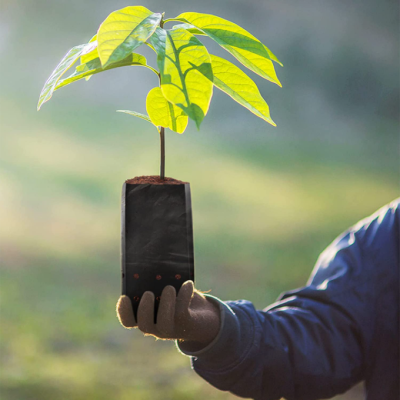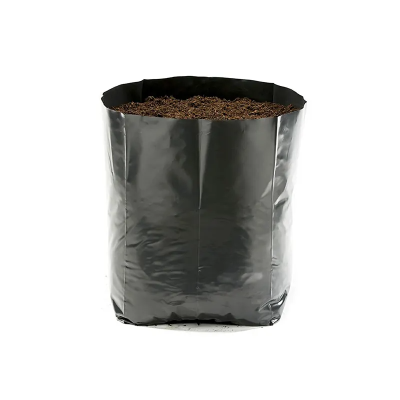Creating a thriving garden with plastic grow bags can be a rewarding and successful gardening method. Here’s a step-by-step guide to help you get started:
- Choose the Right Plastic Grow Bags: Select high-quality plastic grow bags in the appropriate size for your plants. Consider the depth and width of the bags based on the root system and growth requirements of your chosen plants.
- Select the Right Potting Mix: Use a well-draining potting mix specifically formulated for container gardening. Avoid using heavy garden soil, as it may hinder drainage and root development. The potting mix should be lightweight, fertile, and able to retain moisture while allowing excess water to drain.
- Prepare the Grow Bags: Before planting, ensure your plastic grow bags have drainage holes at the bottom. If they don’t have pre-punched holes, create them by making small slits or holes with a sharp object. This ensures proper water drainage and prevents waterlogging.
- Fill the Grow Bags with Potting Mix: Fill the plastic grow bags with the potting mix, leaving enough space at the top for watering and root growth. Gently firm the potting mix, ensuring there are no air pockets.
- Plant the Seeds or Seedlings: Follow the specific planting instructions for each plant variety. Create holes or depressions in the potting mix to accommodate the seeds or seedlings at the appropriate depth. Carefully place the seeds or seedlings in their designated spots and cover them with the potting mix.
- Water Thoroughly: After planting, water the grow bags thoroughly to settle the potting mix and ensure proper hydration of the seeds or seedlings. Water until you see water draining out from the bottom drainage holes.
- Provide Adequate Sunlight: Place the grow bags in a location that receives the appropriate amount of sunlight for the plants you’re growing. Most plants thrive with at least 6 hours of direct sunlight per day. Monitor the light levels and adjust the placement of the grow bags as needed.
- Water Regularly: Monitor the moisture level in the grow bags and water your plants as needed. The frequency of watering depends on factors such as plant type, weather conditions, and potting mix moisture retention. Avoid overwatering, which can lead to waterlogged soil and root rot, while ensuring the potting mix remains evenly moist.
- Fertilize as Needed: Depending on the specific plant requirements, fertilize your plants with a balanced, water-soluble fertilizer formulated for container gardening. Follow the instructions provided by the manufacturer for proper application rates and frequency.
- Monitor and Maintain: Regularly inspect your plants for signs of pests, diseases, or nutrient deficiencies. Address any issues promptly using organic pest control methods or appropriate treatments. Prune and thin out your plants as needed to promote healthy growth and maintain proper spacing.
- Support Vining Plants: If growing vining plants in plastic grow bags, provide appropriate support structures such as stakes, trellises, or cages to guide their growth and prevent them from sprawling.
- Rotate Crops and Replant: After harvesting, rotate your crops by replanting different plant varieties in the same grow bags or using fresh grow bags. This helps prevent the buildup of pests and diseases and maintains soil fertility.
- Maintain Proper Drainage and Air Circulation: Regularly check the drainage holes in your plastic grow bags to ensure they are clear and allow for proper water drainage. Periodically lift the bags slightly to promote air circulation and prevent the accumulation of moisture or mold on the bottom surface.
- Regularly Harvest and Enjoy: Once your plants reach maturity, harvest the fruits, vegetables, or herbs and enjoy the rewards of your thriving garden. Regular harvesting encourages further plant growth and productivity.








